A RARE DOCUMENTARY BLUE AND WHITE 'LOTUS AND CRANES' BASINWanli six-character mark and cyclically dated to the Dinghai year, corresponding to 1587 and of the period
Sturdily potted with deep rounded sides, painted in vibrant tones of cobalt-blue in the interior with eight cranes in a lotus pond and in flight beside gnarled rocks with 'hemp-fibre' brushstrokes, issuing a long willow tree, all beneath ruyi-shaped clouds, the exterior with four shaped panels each divided by an aster flower-head, the panels containing flowers and birds, all reserved on a blue wash ground of diaper-pattern and below a key-fret band below the mouth rim, the slightly counter-sunk base unglazed save a circular recessed 'button' with underglaze-blue mark and date, some characters rubbed off.
29cm (11 1/2in) diam. Footnotes1587(明萬曆丁亥年) 青花錦地開光花卉紋「連封一品」盆
青花「萬曆丁亥年造」楷書款
Provenance: Christie's London, 15 July 1981, lot 80
Marchant and Son, London
A Dutch private collection
Published, Illustrated and Exhibited: A.du Boulay, Christie's Pictorial History of Chinese Ceramics, Oxford, 1984, p.145, no.10.
S. Marchant & Son, Ming Blue and White: Jiajing-Chongzhen Including Dated Examples, London, 2004, no.21.
來源:倫敦佳士得,1981年7月15日,拍品編號80
倫敦古董商Marchant and Son
荷蘭私人收藏
展覽著錄:A.du Boulay,《佳士得圖說中國陶瓷史》,牛津,1984年,第145頁,編號10
S.Marchant and Son,《Ming Blue and White: Jiajing-Chongzhen Including Dated Examples》,倫敦,2004年,編號21
The present lot is extremely rare for both its shape and mark. The mark on the present lot has four-characters rubbed off in between the Wanli reign mark and Dinghai year cyclical date (1587). An indication of what might have originally been written there can be found on a blue and white vase in the Metropolitan Museum of Art, New York, which has a mark of the same format and date. In the centre between the reign name and date are four characters reading Qianfu yingyong (黔府應用); see How to Read Chinese Ceramics, New York, 2015, pp.92–95, no.26.
'Qianfu' means Palace of Qian (the region of Yunnan and Guizhou), ruled by the Mu family. During the Ming dynasty, the Mu (沐) family were soldiers who guarded the turbulent southwest border with various native tribes that often rebelled against the Ming regime. The Mu family's territory encompassed the vast western part of Yunnan and Guizhou Provinces today. It is likely that the present lot originally had the same mark of Qian fu ying yong.
Another reason to suggest that the present lot had the same mark as on the Metropolitan Museum vase, is that the latter vase is painted with the Song dynasty scholar Zhou Dunyi (1017-1073), who is famous for his essay 'On Loving Lotus' (Ai lian shuo). Thus, the motif of a lotus pond on the present lot, together with the mark of same date and format as found on the Zhou Dunyi vase, would strongly suggest that they were made as a set together. It is further interesting to note that Zhou Dunyi vase depicts various vessels and jars, some of which appear to be within basins, similar to the present lot, indicating the likely function for the basin.
Lotus ponds populated by cranes were a ubiquitous subject for scholarly paintings and porcelain dating from at least the Yuan dynasty, probably because of their close connection to Confucian values and beliefs concerning the attainment of Immortality. Rising unmarked from the dark depths of ponds and rivers to flower in the sun, unadulterated by coarseness or vulgarity, lotus symbolise purity, virtue and upright men. In addition, since the fourth century AD, the souls of Buddhist believers were thought of entering the Pure Land Heaven from within a lotus calyx; see A.E.Barrott-Wicks, Children in Chinese art, Honolulu, 2002, p.8. Lotus ponds also adorned the heavenly realms inhabited by Buddha Manjusri and Vimalakirti, depicted on the frescoes of Buddhist caves; see E.L.Johnston, 'A Survey of Liao Dynasty Bird and Flower Paintings', in Bulletin of Song/Yuan Studies, vol.24, 1994, p.77. Cranes were thought to provide the essential moral definition to a dynastic rule, following their ability to dance to music accompanying important rituals; see P.Sturman, 'Cranes Above Kaifeng: the Auspicious Image at the Court of Huizong', in Ars Orientalis, 1990, vol.20, pp.33-68. In addition, as birds spanning a long life, cranes were described in literature as vehicles of the Immortals, following the rise of Daoism during the Han dynasty and the increased beliefs in attaining Immortality through refinement of the body and consequent ascension to Heaven; see A.Seidel, 'Post-Mortem Immortality or: The Taoist Resurrection of the Body,' in Gilgul, 1987, pp.223-237.
Compare with a related but smaller blue and white 'Li Bai' brush washer, Chongzhen, which was sold at Bonhams London, 11 May 2017, lot 193.
A RARE DOCUMENTARY BLUE AND WHITE 'LOTUS AND CRANES' BASINWanli six-character mark and cyclically dated to the Dinghai year, corresponding to 1587 and of the period
Sturdily potted with deep rounded sides, painted in vibrant tones of cobalt-blue in the interior with eight cranes in a lotus pond and in flight beside gnarled rocks with 'hemp-fibre' brushstrokes, issuing a long willow tree, all beneath ruyi-shaped clouds, the exterior with four shaped panels each divided by an aster flower-head, the panels containing flowers and birds, all reserved on a blue wash ground of diaper-pattern and below a key-fret band below the mouth rim, the slightly counter-sunk base unglazed save a circular recessed 'button' with underglaze-blue mark and date, some characters rubbed off.
29cm (11 1/2in) diam. Footnotes1587(明萬曆丁亥年) 青花錦地開光花卉紋「連封一品」盆
青花「萬曆丁亥年造」楷書款
Provenance: Christie's London, 15 July 1981, lot 80
Marchant and Son, London
A Dutch private collection
Published, Illustrated and Exhibited: A.du Boulay, Christie's Pictorial History of Chinese Ceramics, Oxford, 1984, p.145, no.10.
S. Marchant & Son, Ming Blue and White: Jiajing-Chongzhen Including Dated Examples, London, 2004, no.21.
來源:倫敦佳士得,1981年7月15日,拍品編號80
倫敦古董商Marchant and Son
荷蘭私人收藏
展覽著錄:A.du Boulay,《佳士得圖說中國陶瓷史》,牛津,1984年,第145頁,編號10
S.Marchant and Son,《Ming Blue and White: Jiajing-Chongzhen Including Dated Examples》,倫敦,2004年,編號21
The present lot is extremely rare for both its shape and mark. The mark on the present lot has four-characters rubbed off in between the Wanli reign mark and Dinghai year cyclical date (1587). An indication of what might have originally been written there can be found on a blue and white vase in the Metropolitan Museum of Art, New York, which has a mark of the same format and date. In the centre between the reign name and date are four characters reading Qianfu yingyong (黔府應用); see How to Read Chinese Ceramics, New York, 2015, pp.92–95, no.26.
'Qianfu' means Palace of Qian (the region of Yunnan and Guizhou), ruled by the Mu family. During the Ming dynasty, the Mu (沐) family were soldiers who guarded the turbulent southwest border with various native tribes that often rebelled against the Ming regime. The Mu family's territory encompassed the vast western part of Yunnan and Guizhou Provinces today. It is likely that the present lot originally had the same mark of Qian fu ying yong.
Another reason to suggest that the present lot had the same mark as on the Metropolitan Museum vase, is that the latter vase is painted with the Song dynasty scholar Zhou Dunyi (1017-1073), who is famous for his essay 'On Loving Lotus' (Ai lian shuo). Thus, the motif of a lotus pond on the present lot, together with the mark of same date and format as found on the Zhou Dunyi vase, would strongly suggest that they were made as a set together. It is further interesting to note that Zhou Dunyi vase depicts various vessels and jars, some of which appear to be within basins, similar to the present lot, indicating the likely function for the basin.
Lotus ponds populated by cranes were a ubiquitous subject for scholarly paintings and porcelain dating from at least the Yuan dynasty, probably because of their close connection to Confucian values and beliefs concerning the attainment of Immortality. Rising unmarked from the dark depths of ponds and rivers to flower in the sun, unadulterated by coarseness or vulgarity, lotus symbolise purity, virtue and upright men. In addition, since the fourth century AD, the souls of Buddhist believers were thought of entering the Pure Land Heaven from within a lotus calyx; see A.E.Barrott-Wicks, Children in Chinese art, Honolulu, 2002, p.8. Lotus ponds also adorned the heavenly realms inhabited by Buddha Manjusri and Vimalakirti, depicted on the frescoes of Buddhist caves; see E.L.Johnston, 'A Survey of Liao Dynasty Bird and Flower Paintings', in Bulletin of Song/Yuan Studies, vol.24, 1994, p.77. Cranes were thought to provide the essential moral definition to a dynastic rule, following their ability to dance to music accompanying important rituals; see P.Sturman, 'Cranes Above Kaifeng: the Auspicious Image at the Court of Huizong', in Ars Orientalis, 1990, vol.20, pp.33-68. In addition, as birds spanning a long life, cranes were described in literature as vehicles of the Immortals, following the rise of Daoism during the Han dynasty and the increased beliefs in attaining Immortality through refinement of the body and consequent ascension to Heaven; see A.Seidel, 'Post-Mortem Immortality or: The Taoist Resurrection of the Body,' in Gilgul, 1987, pp.223-237.
Compare with a related but smaller blue and white 'Li Bai' brush washer, Chongzhen, which was sold at Bonhams London, 11 May 2017, lot 193.
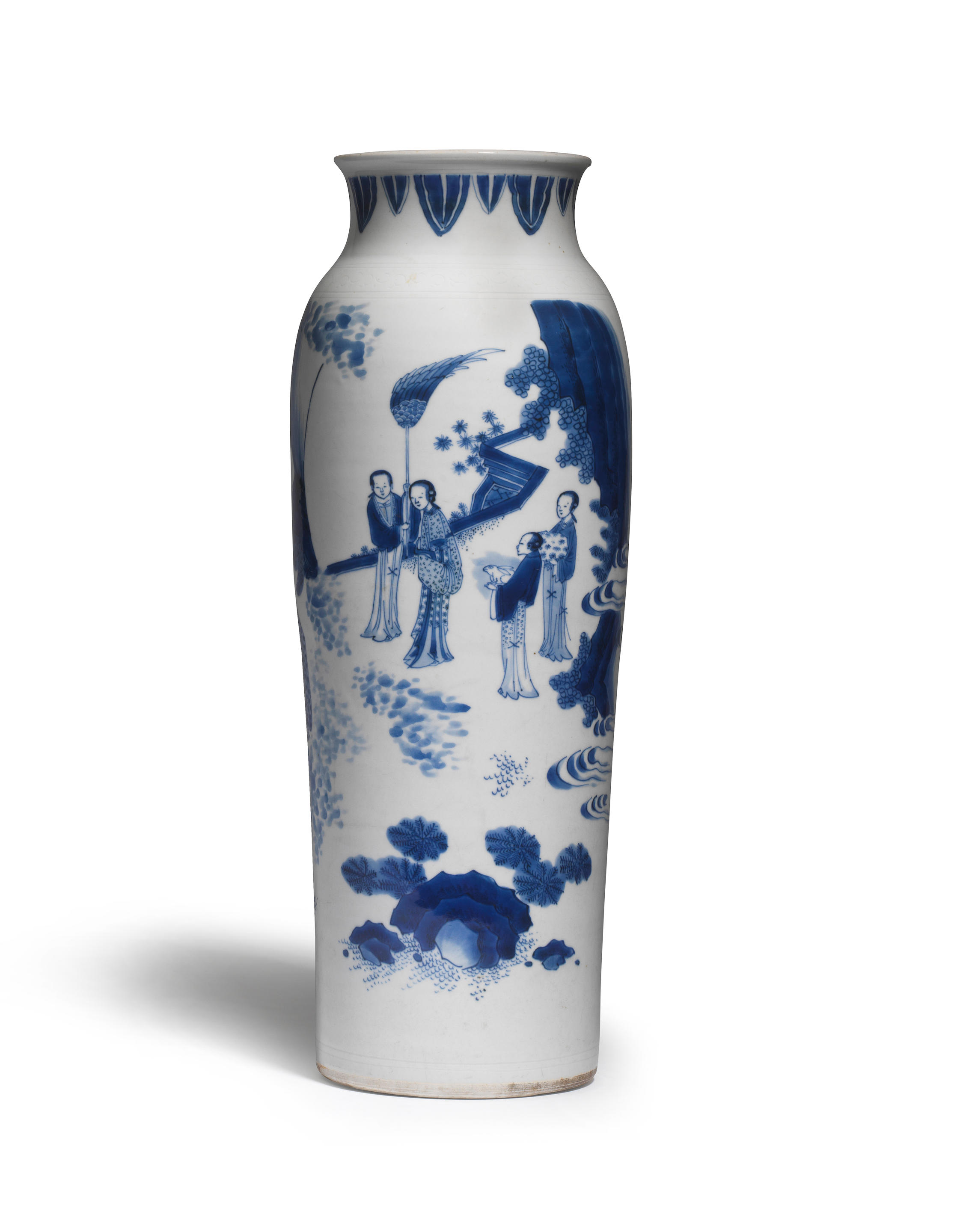


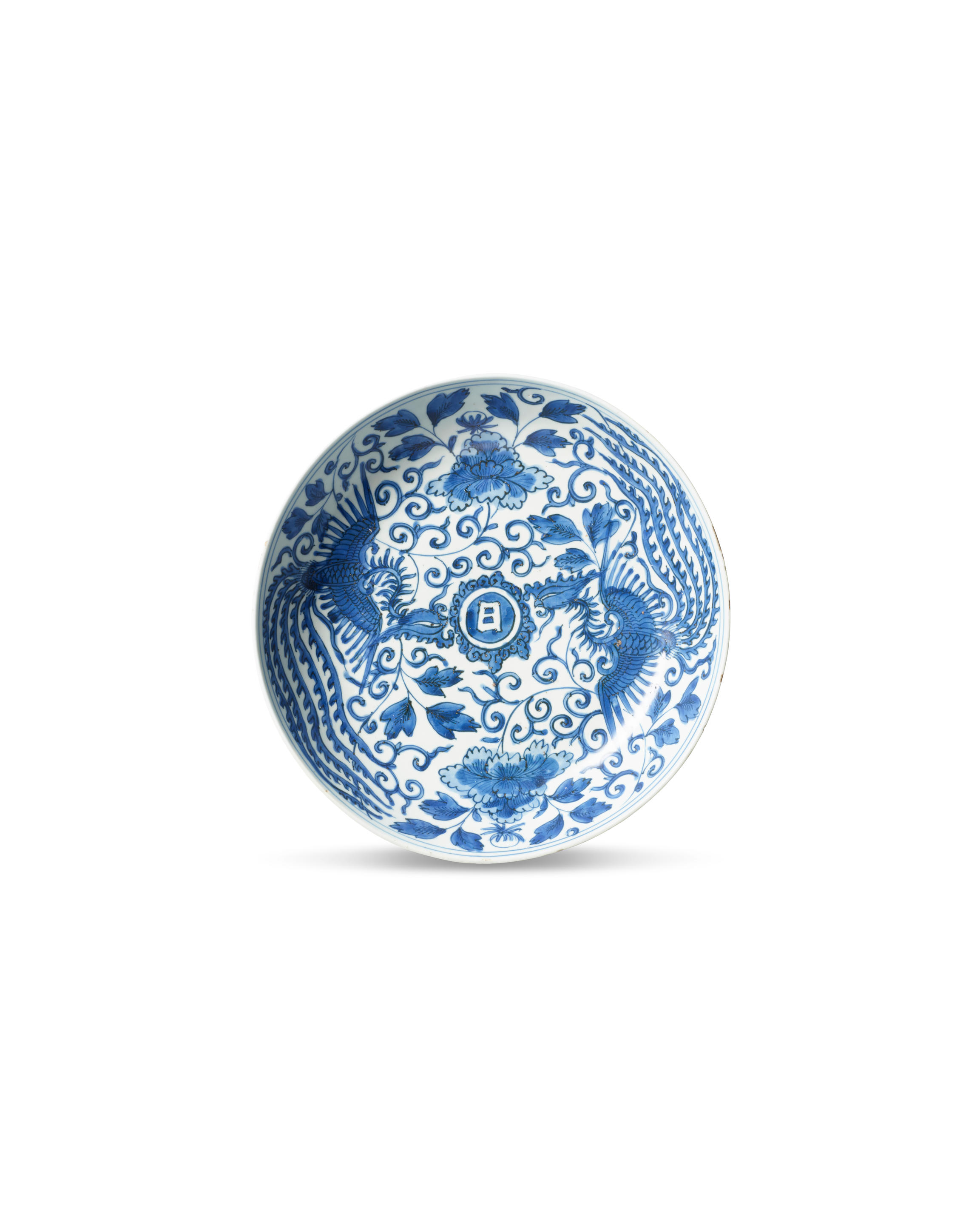




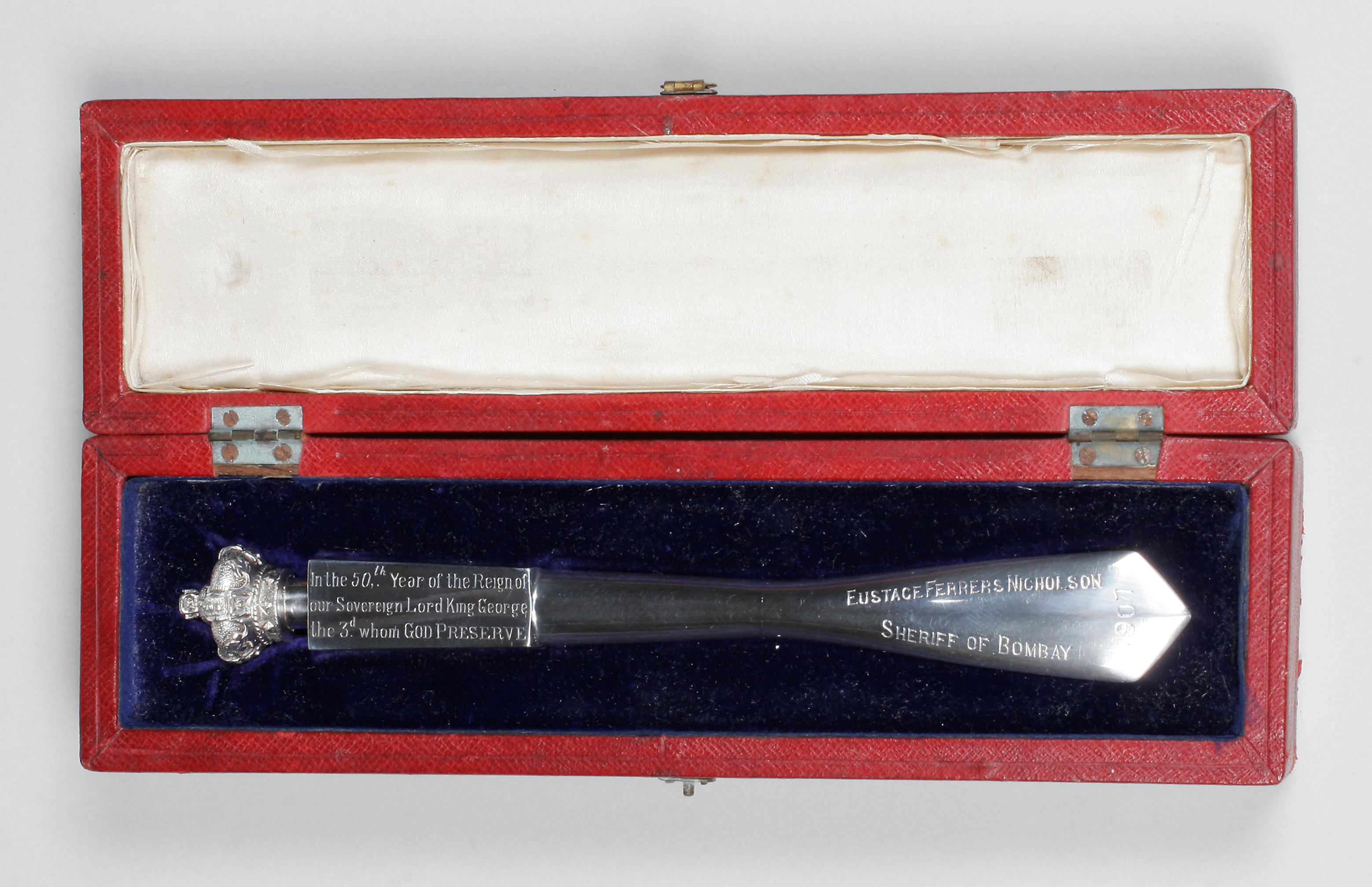


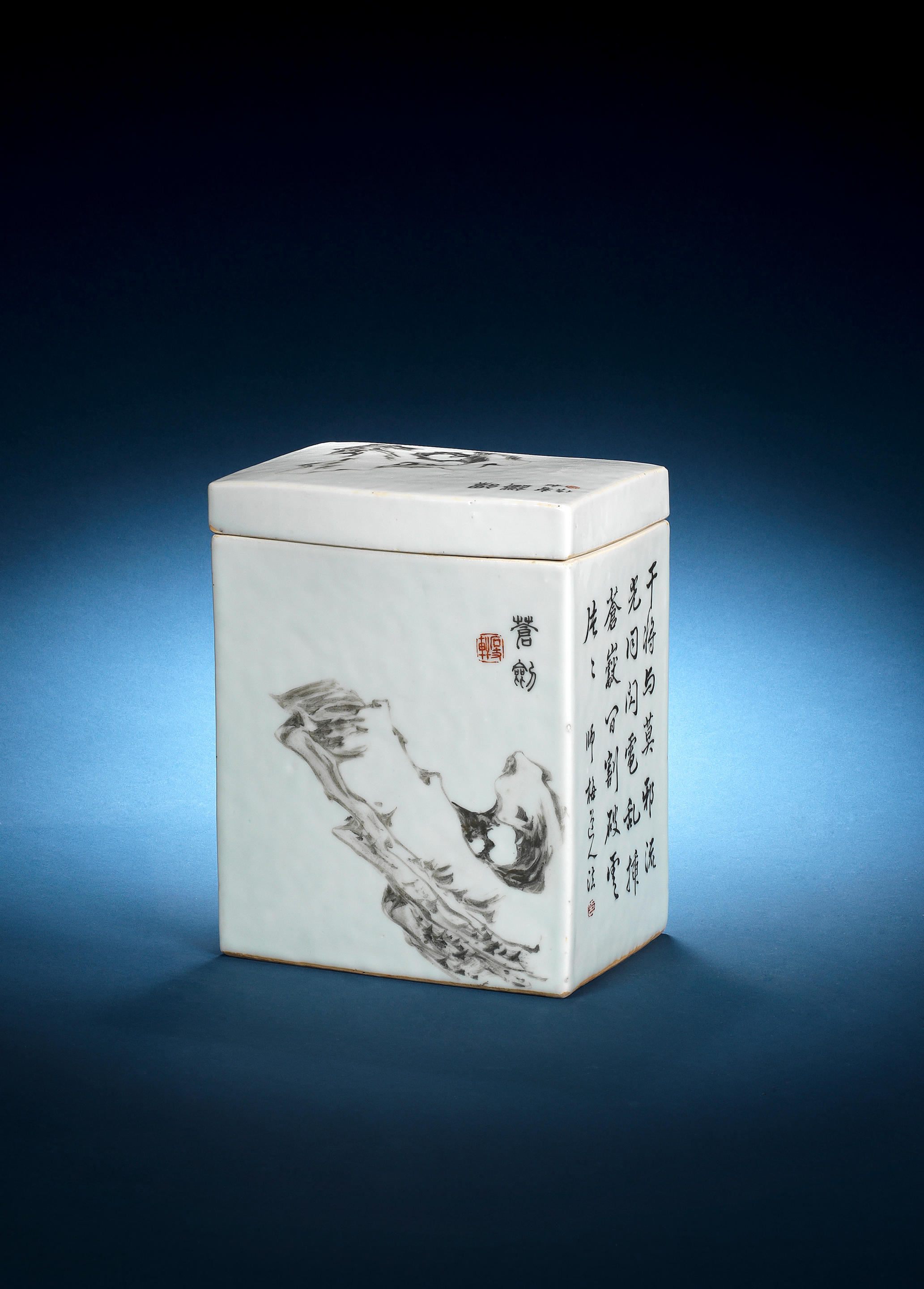
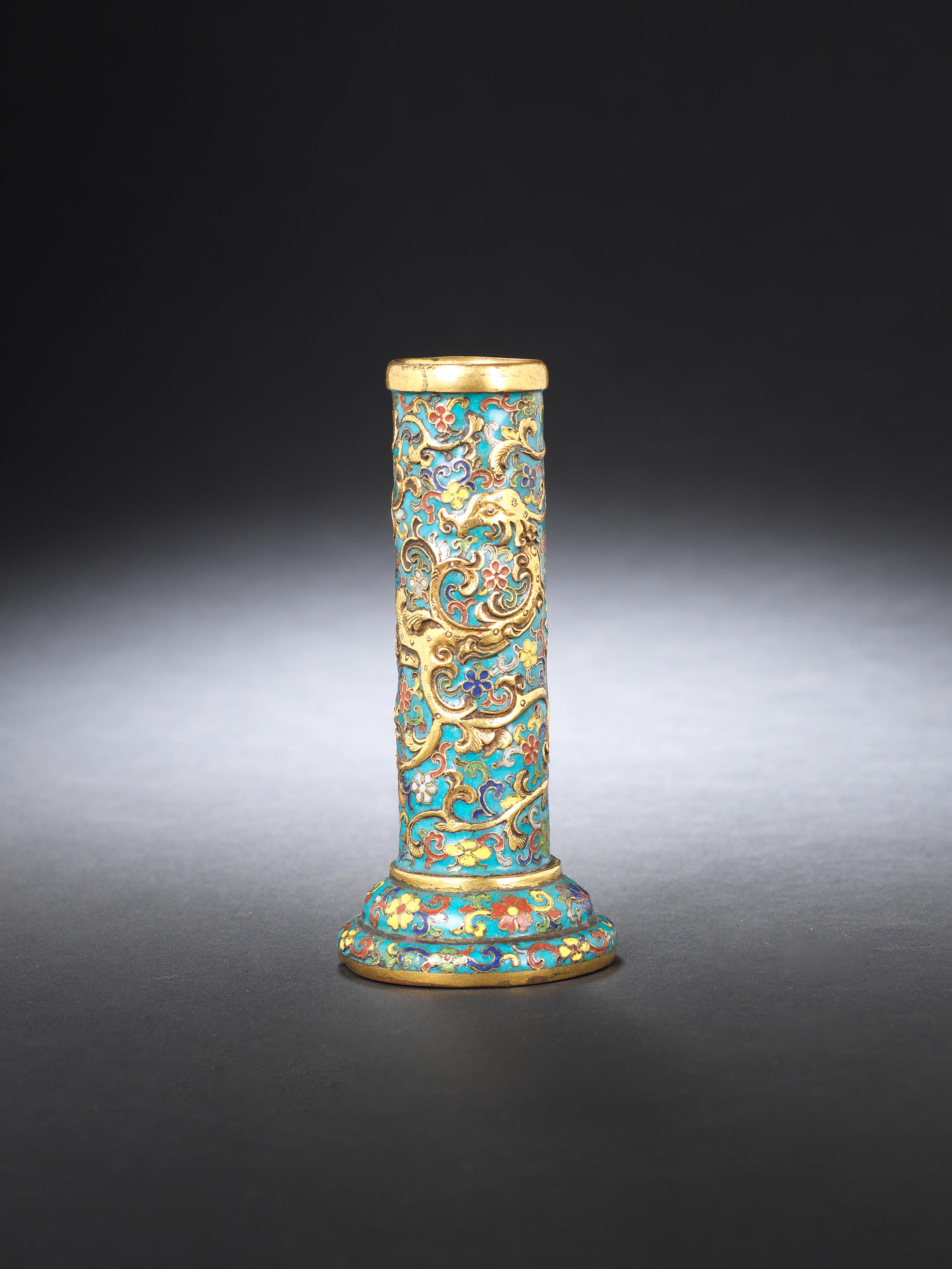
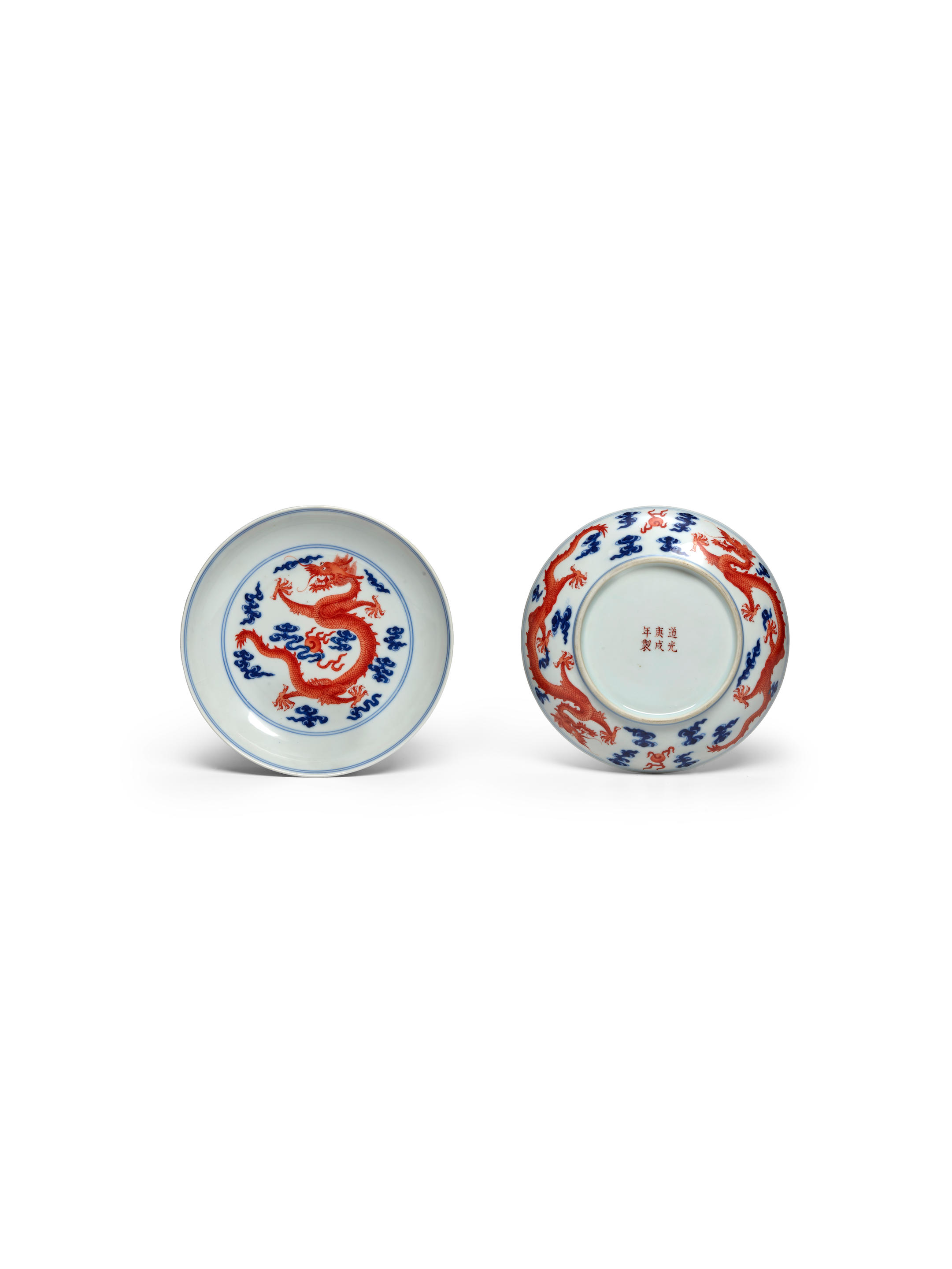

Try LotSearch and its premium features for 7 days - without any costs!
Be notified automatically about new items in upcoming auctions.
Create an alert